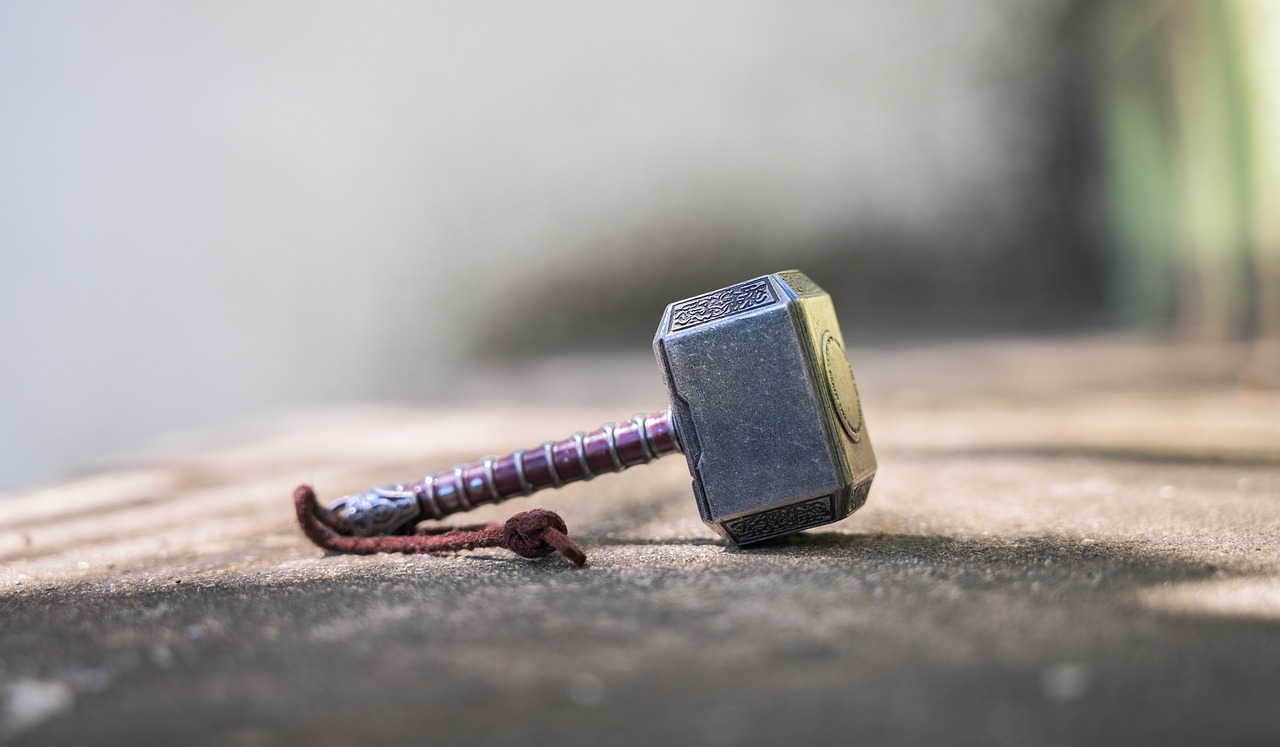When contemplating Norse mythology, visions of formidable deities, mysterious beings, and grand confrontations often surface. Among these legendary figures, Thor, the thunder god, stands out as perhaps the most renowned, with his hammer, Mjölnir, recognized as one of mythology’s most iconic artifacts. Mjölnir’s significance has endured throughout history, permeating various forms of expression, from classic artwork to contemporary media, especially through Marvel’s popularized Thor series.
The Origins of Mjölnir
The backstory of Mjölnir is surprisingly modest given its formidable reputation, reflecting not so much Thor’s unparalleled strength but rather the interplay of cunning and folly. The tale within the Prose Edda, a 13th-century Norse manuscript, unfolds as follows: Loki, the trickster god, played a prank by severing the luxurious golden hair of Sif, Thor’s wife. Thor, infuriated upon discovering Loki’s antics, vowed revenge. However, Loki, ever the slippery character, managed to bargain for his life by promising to replace Sif’s hair with an even finer golden mane, created by the most skilled dwarven artisans.
To fulfill his pledge, Loki ventured to Svartheim, the realm of dwarves, where he tasked the sons of Ivaldi with forging this new hair. The dwarves worked diligently, impressively crafting Sif’s hair from pure gold and producing other remarkable treasures as well. However, Loki, not satisfied with simply keeping his word, challenged two other dwarves, Brokkr and Sindri, to create even finer items. Confident in their abilities, he foolishly wagered his head.
In response, the dwarves set to work, and sensing the possibility of loss, Loki used his trickster abilities to disrupt their craftsmanship by transforming into a fly and evading their focus. Despite his interference, they managed to forge a powerful hammer, Mjölnir, among other significant artifacts. Unfortunately, due to Loki’s meddling, the hammer’s handle turned out to be shorter than intended, thus containing a flaw.
Mjölnir’s Cultural Importance
Regardless of its imperfection, Mjölnir emerged as an extraordinary weapon and became Thor’s cherished heirloom. With Mjölnir, Thor wielded the power to vanquish his adversaries, giants, and even fellow gods. It was often said that the mere impact of the hammer on the ground produced flashes of lightning and resonating thunder. Its unique ability to return after being thrown made it an ideal weapon for a thunder deity. Moreover, its immense weight ensured that only those of considerable strength could wield it.
The significance of Mjölnir extends beyond mere physical prowess; it embodies the process of transformation. In the realm of Norse mythos, Mjölnir was a symbol of the seasonal shift, particularly the transition from the harshness of winter to the bounty of summer. Such transformations were crucial for a community deeply tied to agriculture, with celebrations such as Samhain marking harvest time and forming a precursor to modern-day Halloween.
Furthermore, Mjölnir came to represent fertility, reflective of Thor’s nurturing capabilities, which touched upon both agricultural fertility and human vitality. Thus, it evolved into a potent symbol of new life and hope.
Above all, Mjölnir symbolized strength. To Viking warriors, it epitomized the force needed to brace against threats and protect one’s kin and community. It became a cherished amulet to take into battle, embodying the hope that Thor would bestow his might in moments of dire need.
As the influence of Christianity spread through Scandinavia, the presence of Mjölnir did not wane. Instead, it continued to be worn in a concealed manner. Viking warriors adapted by donning Mjölnir necklaces underneath their garments, allowing them to profess their Christian beliefs publicly while still honoring ancient traditions in private.
From its mythological conception to its enduring cultural legacy, Mjölnir holds a paramount place within Norse heritage. It stands not only as a herald of strength and authority but also as a marker of transition and fresh beginnings. Change can be intimidating, much like the transformations we experience in life or while observing the world shift around us. Symbolically, the hammer illustrates this concept well, as it is a tool for both destruction and creation. Just as Thor employed his hammer for formidable obliteration, he also wielded it for building and nurturing. This duality captures the essence of Mjölnir, a legacy of power that we can all strive to emulate.



